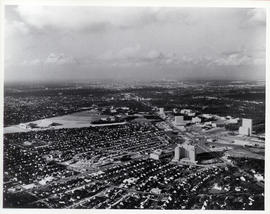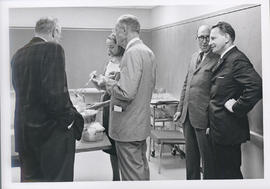This sound recording comes from Side 2 of a 5" Audio Reel-to-Reel labeled "Reel #3." It is dated 10/28/68 and appears to be a continuation of the same meeting taking place at the end of Side 1 of the Audio Reel-to-Reel. It records the meeting of an unidentified organization. The agenda items focus on the approval and administration of medical programs with a focus on the Houston area. The recordings feature the introduction of proposals/items, debate, amendments, and voting.
The recording opens with a vote of disapproval, followed by a movement to re-open and motion to defer. There is a motion for reconsideration of Proposal 6. Following a discussion of the program and funds, the motion is withdrawn.
(8:02) Items 7, 8, and 9. "Projects relating to recruitment, education, improved training for allied health personnel.” It is recommended that it be referred back to the coordinator of Regional Medical Programs and that he form a special committee or task force to develop a proposal. An Amendment is proposed to consider Item 9 relating to junior colleges separately. Other programs up for discussion and vote are an educational media instructional program and a program for medical service assistants, clinical research, and administration. There is discussion of whether these proposals should be considered separately. There is a vote on an amendment to consider 9 separately. There is consideration of the role of junior colleges in paramedical training. There is a vote with 19 in favor to send Items 7 and 8 to committee.
(20:10) Item 9 “Recruitment of allied healthcare workers.” There is a movement for approval followed by discussion. A speaker notes that it would augment and amplify an existing project and establish an advisory committee. One speaker addresses Dr. Eastwood (possibly Dr. Richard T. Eastwood, President of the TMC). It is noted that one aspect of the proposal was intended to bring together elements related to junior colleges, but more important was total recruitment of allied healthcare workers. There is a vote with 19 in favor.
(27.42) Proposal 10 “Extending primary care nursing training based in Riverside and St. Joseph's.” The Steering committee had recommended deferring action on this proposal and appointing a subcommittee, after which there was a recommendation for approval. There is a motion to approve Item 10. A speaker alludes to a program already ongoing, but the recording ends abruptly.






















































































